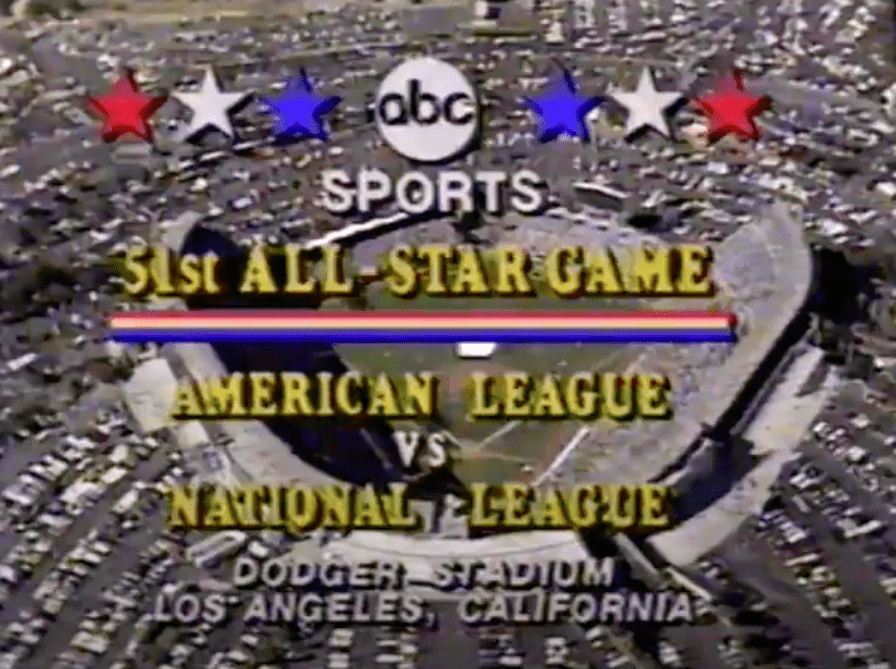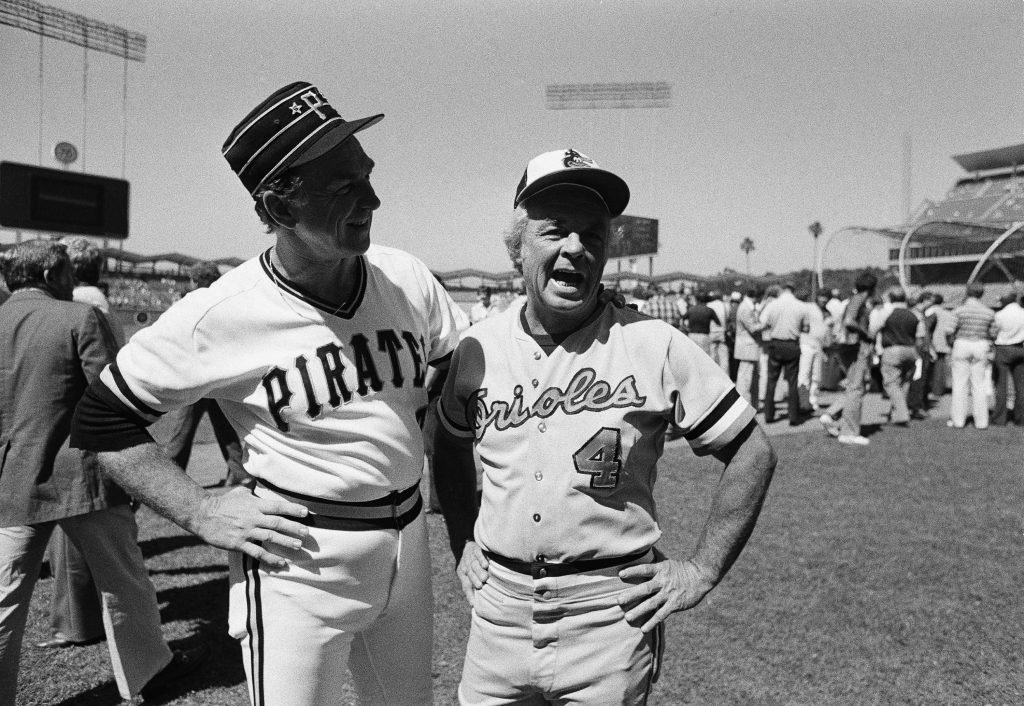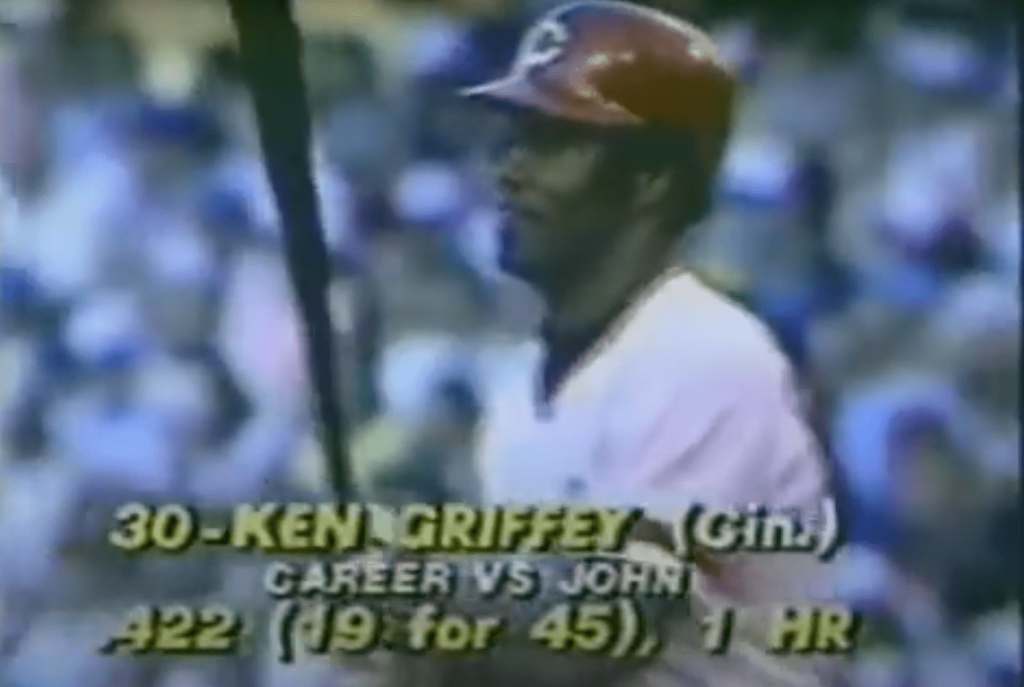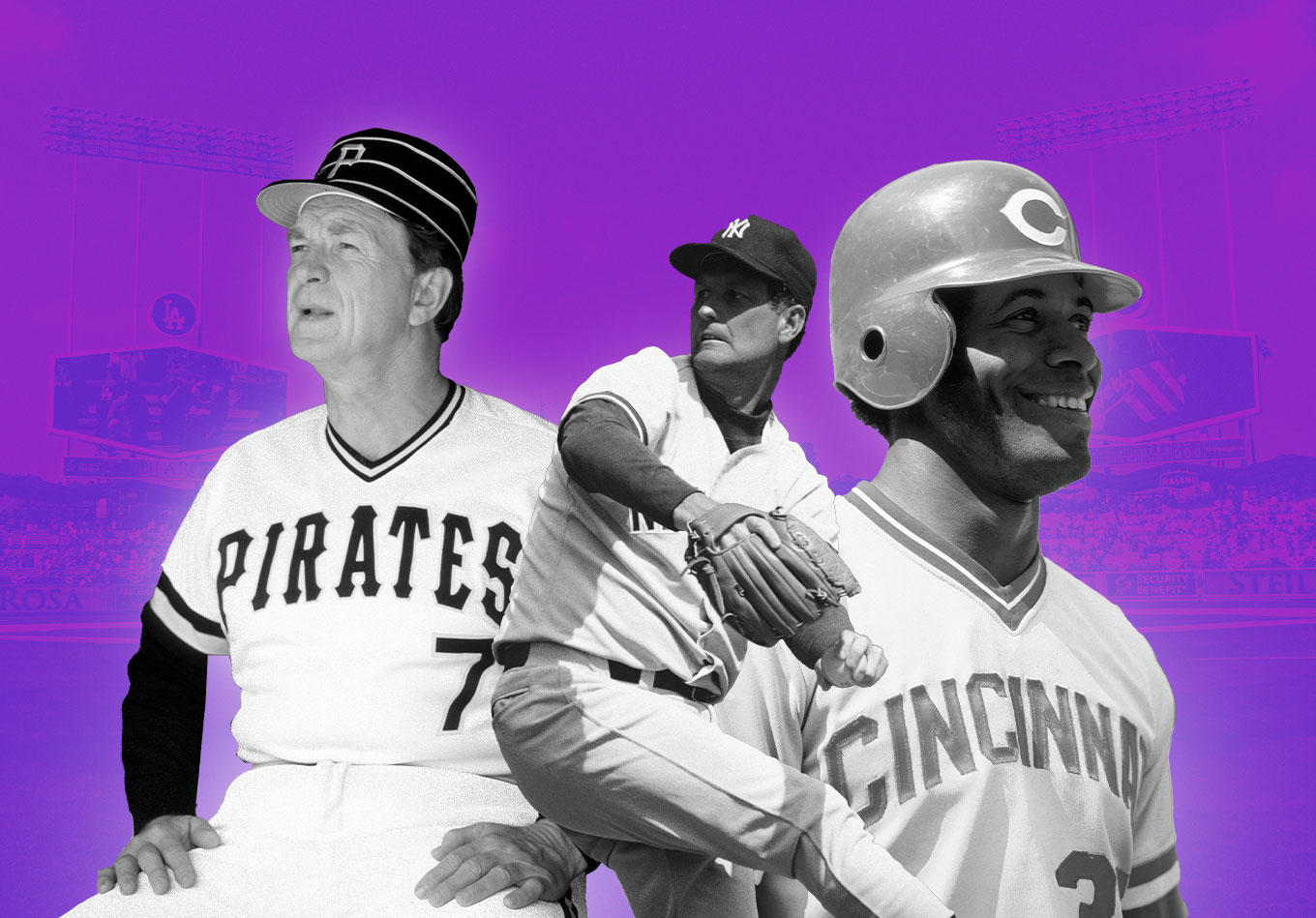We look back at the last time the Mid-Summer Classic was held at Chavez Ravine, the painstaking process of collecting data at that time, the inside info given to Chuck Tanner and how much it was worth to the Pirates manager.
Major League Baseball’s annual All-Star Game is slated for Dodger Stadium on July 19. MLB chose that site for this year’s game after the 2020 All-Star Game, originally scheduled for Dodger Stadium, was canceled due to COVID-19.
So the iconic ballpark will host the All-Stars 60 years after its 1962 opening, rather than 40 years after the only All-Star Game ever played there in 1980.
The Mid-Summer Classic was a very big deal in 1980. Just in terms of television alone, the ABC telecast earned a 26.8 rating and was watched in 20.45 million households. Neither of those figures has been reached in any year since (last year, just over eight million fans watched FOX’s presentation of the All-Star Game).
The 1980 game itself, if referenced at all today, is usually cited in connection with one of the starting pitchers, J.R. Richard of the Houston Astros, then in the National League. At 6-foot-8, the 30-year-old was a flamethrower who the year before had become just the third major-leaguer since 1900 to strike out more than 300 batters in two consecutive seasons, joining Sandy Koufax and Nolan Ryan.

But after tossing two scoreless innings to start that contest, Richard was to pitch only one other big-league game. He had to leave in the fourth inning of a July 14 start when he felt numbness in his pitching hand and couldn’t properly grip a ball. After being placed on the disabled list and undergoing medical tests, he suffered a stroke on July 30 and his major-league career prematurely ended.
But the tragedy that would befall Richard was still unknown as the All-Stars congregated in Los Angeles in 1980. In those days, the National Leaguers dominated the mid-summer competition. In fact, they had won 27 and lost only six of the games played over the three previous decades (two All-Star Games were played in a few of those seasons), including 16 wins in the last 17 meetings.
For a young man in his 20s who found himself working with ABC on its baseball coverage, the telecast of the game was the highlight of the summer. My job, as director of information, was to find interesting facts about the players and teams – a task that was much different in the pre-internet, manual-research days than it is today.
That year, I had become a bit obsessed with a certain type of information that was then generally uncommon on telecasts — namely, the statistics showing how the current batter had fared against the guy on the mound. I had researched similar data, all by hand, for several of ABC’s baseball telecasts over the previous few years, but now I wanted to do it for the All-Star Game, a much trickier task. For I would need to create a giant matrix of all past regular-season games in which each pitcher in the 1980 All-Star Game could have possibly faced a current All-Star hitter from the opposite league. Then, I would go through the matrix, game by game, and granularly collect the results of any specific pitcher-vs.-batter matchups by reviewing microfilm of the game’s play-by-play account.
So I would need to look up every game in which, say, Steve Stone (then with the Baltimore Orioles, but previously with the San Francisco Giants and Chicago Cubs), had pitched against the San Diego Padres, to see how Dave Winfield had done in those games, or against the Pittsburgh Pirates, to see how Dave Parker did against him, or the Dodgers, to check out Steve Garvey, Dave Lopes and Bill Russell. You get the idea. I don’t know how many hours it took, but I do recall more than one all-nighter.
Finally, the research was finished, just in time to fly to Los Angeles to prepare on-site for the telecast. After assimilating all of the pitcher-vs.-batter data, it became clear that the most unusual and potentially telling piece of information was that the Cincinnati Reds left-handed hitting outfielder Ken Griffey (the father, not the son) owned a .422 career batting average against New York Yankees left-hander Tommy John (the pitcher, not the surgery), with 19 hits in 45 at-bats, including a home run. That kind of production ran counter to a near-universal baseball truth, then as now: Facing southpaws is tough for most lefty hitters. However, even though these exception-to-the-rule figures were intriguing, the overriding problems for getting this information on the air were that (a) Griffey would not start the game; (b) John might not start; and (c) there was no guarantee that either guy would even play – much less face each other.
This would require a bit of creativity. At first, it seemed that Orioles manager Earl Weaver, directing the American League team, might use John as his starting pitcher. He and Stone shared the league lead in wins with identical 12-3 records, with John’s ERA at 3.08 and Stone’s at 3.10. But while John had just two days of rest, Stone had three, and Weaver announced the day before the game that his own guy, Stone, would start. That was fine with me as Griffey was not elected to start, and would be unlikely to face the opposing starter. It seemed probable that Weaver would use a lefty to follow Stone, as four of the seven other pitchers on his squad were southpaws. John was the most accomplished among them and since he had also spent several seasons with the Dodgers, he seemed the logical candidate.

But there was also the other side to consider. Even though substitutions are frequent during the course of an All-Star Game, why would Chuck Tanner, the Pirates manager who would lead the NL team, use the lefty Griffey against John? Well, maybe he’d just have to be educated on their mano-a-mano history.
While working on a regular-season or postseason telecast, I was quite protective of self-researched information, and would certainly not share it with anyone connected with either team, especially not with a player or manager. But this was the All-Star Game, and no one’s livelihood was going to depend on who won or lost. (And, after all, I had spent all those hours…) Accordingly, at the stadium the day prior to the game, I waited outside Tanner’s office while he chatted with Dale Murphy, then a young Atlanta Braves outfielder whom Tanner had added to the team as a reserve. Murphy (as if out of central casting) was thanking Tanner profusely for selecting him for his first All-Star Game, telling his future Atlanta manager that even if he didn’t get to play, it was thrilling “just to be here.” That cliché, by the way, is not heard as much these days, when just about every position-player chosen for an All-Star Game finds his way into the box score.
Eventually, Murphy left and I approached Tanner, identified myself and my role, and conveyed the tantalizing piece of information: Griffey was a .422 career hitter over 45 at-bats against John. Tanner reacted immediately, something along the lines of, “but that’s lefty-against-lefty!” “Yes,” I responded, “but it’s nonetheless the case.” Tanner smiled and said, “All right, then. If John comes in to pitch, I’ll put Griffey in.”
ABC’s telecast the next day started shortly after 5 p.m. local time, with a star-studded, five-man announcing crew: Keith Jackson, Al Michaels, Don Drysdale, Howard Cosell and, for in-game interviews, Bob Uecker. The game was scoreless after three innings. Richard threw his two and was followed by the Dodgers’ Bob Welch. Stone went J.R. one better, pitching three innings (the limit for use by a starting pitcher in an All-Star Game, even though from the current perspective, no starter has thrown three innings since Greg Maddux in 1994). And Stone did his job perfectly, nine up and nine down. Meanwhile, as the third inning progressed, John warmed up in the bullpen. Tanner, seeing that John would be coming in, put Griffey into the game in the top of the fourth, replacing Dave Kingman in left field and batting sixth in the lineup.
John breezed through a 1-2-3 fourth inning, and Fred Lynn provided the game’s first runs, belting a two-run homer off Welch in the fifth. In the bottom half, John easily dispatched Garvey and John Stearns, making it 14 up and 14 down as Griffey slowly strode to the plate.
“And we’ll take our first look at Ken Griffey,” intoned Michaels, who had just taken over the play-by-play from Jackson after the first 4 ½ innings. But as Griffey was moseying toward the plate, Michaels took a moment to sum up the nature of late-afternoon West Coast baseball, “I don’t think you can make enough, Don, about the conditions, the twilight. Over the years, very low-scoring games. You’re never going to see a slugfest when you play this time of day in L.A., and tonight running true to form.”
Uh-oh. By now Griffey was entering the batter’s box, but because Al had invoked Drysdale’s name, Don felt forced to reply. “Well, that’s very true, Al.”
Griffey was settling in. First, for six seconds, we displayed Griffey’s basic batter graphic – his year-to-date batting average and home run and RBI totals. Then we switched the graphic quickly to my big find:

We left it on-screen for nine seconds, which translates to forever in the world of lower-third TV graphics. But Drysdale wasn’t watching the monitor; instead, he amplified his comment. “And, I think, number two is, I said at the top of the show, is that good pitching will stop good hitting. And that’s what we’ve seen so far here tonight. Bob Welch got the one pitch, a 3-2 pitch up to Freddie Lynn, I think Freddie Lynn’s looking fastball all the way, and he just rode it right on out of here. But we’ve seen some excellent pitching so far.”
By the time Drysdale had concluded, John was already into his windup and caught the outside corner for a called strike. For a moment, I thought that the Griffey-vs.-John storyline would not draw a comment from the announcers. As Keith Jackson himself might say, eighty hours gone a wastin’.
But Cosell came to my rescue. “I thought that was an interesting graphic you just saw: Griffey’s career record against Tommy John. Hitting better than .400.”
John took the sign, wound up and delivered his next pitch. We’ll let Michaels and Cosell tell the story:
Michaels: “The strike-one pitch to Ken. Fly ball to deep right-centerfield. Al Bumbry going all the way back…He hit it out!”
Cosell: “See what I mean! He still owns Tommy John!”
The high-fives began immediately: for Griffey in the National League dugout, and for me in the ABC production truck. At that point, Cosell was one of the most prominent faces on US television (with only NBC’s Johnny Carson and CBS’s Walter Cronkite at a comparable level, according to Howard). He was certainly the most prominent sportscaster. He loved nothing more than to see something that he suggested could happen actually take place. And if Howard was happy, everyone was happy. If everyone was happy, I was happy.
The NL went on to win 4-2 and Griffey, who had a bloop single later in the game, was named the MVP. After the telecast went off the air, there was one man I wanted to see. So I made a beeline for the NL clubhouse.
Tanner saw me coming and hurried toward me. “That was unbelievable, just unbelievable!” he screamed. I told him that I was happy for him (I omitted, “and for me”) and wished him luck the rest of the season. He then asked if he could get that kind of information when he went back to his day job, managing the Pirates. It was a question for which I was ready. Sure, I can make that happen. You’d receive a report of every potential batter-vs.-pitcher matchup before each of your games all season. I said, there would be a cost. He asked, “How much?” I answered, “$500 for the season.”
I might as well have said $500 million. He screamed, “What? We could never do that!” We shook hands and I left, doing some quick math in my mind. Tanner had just seen a real-time demonstration of the value of the information. Even if you didn’t believe in its value, especially in cases with far fewer at-bats, wouldn’t you just want to know it? Over a 162-game season, he wouldn’t pay the equivalent of $3 a game for that information?
I went from thrilled to crushed, very quickly. Maybe, I thought, I am in the wrong business. But the world soon changed. Decision-makers in all walks of life were beginning to rely on data, rather than gut instinct, and that modus operandi eventually reached into sports. Teams eventually built their own analytics departments, spending sums that would have sent Tanner reeling.
I’m glad that I stayed.
Banner graphic by Matt Sisneros.
